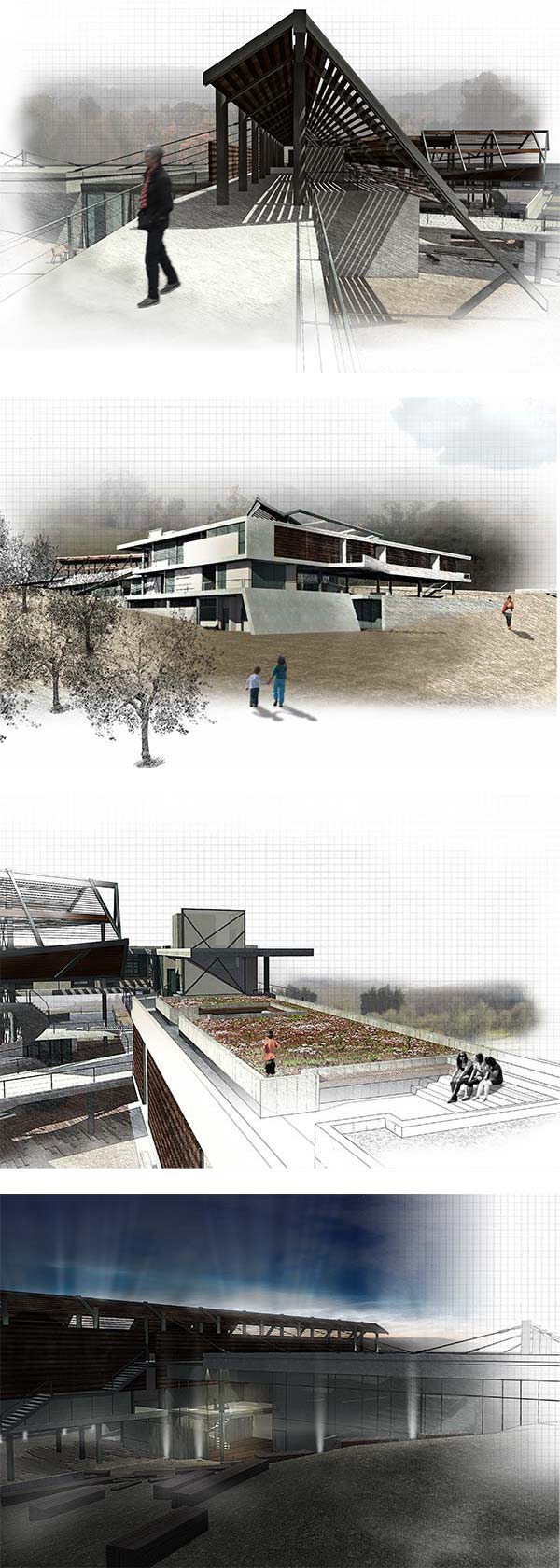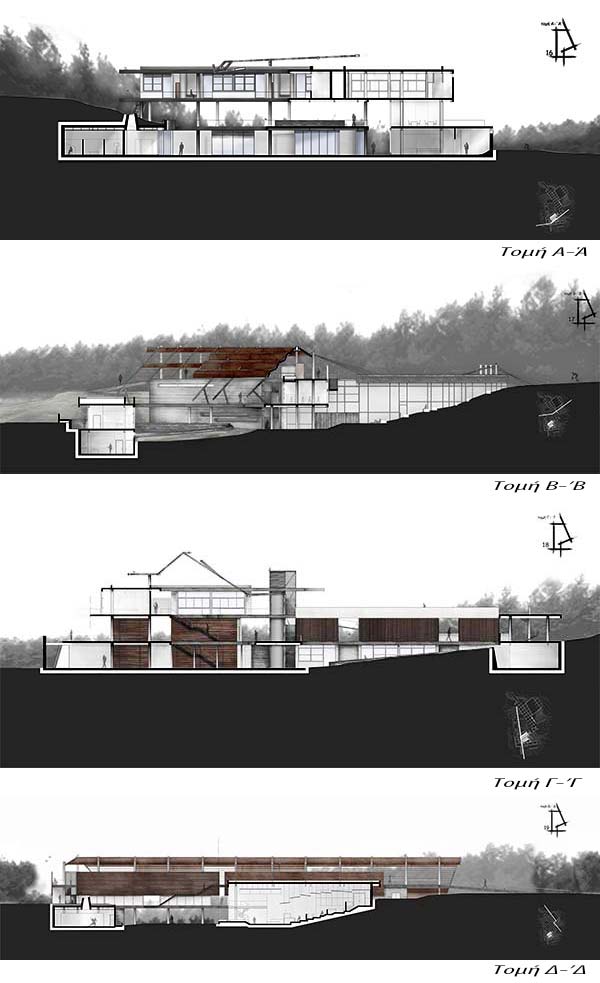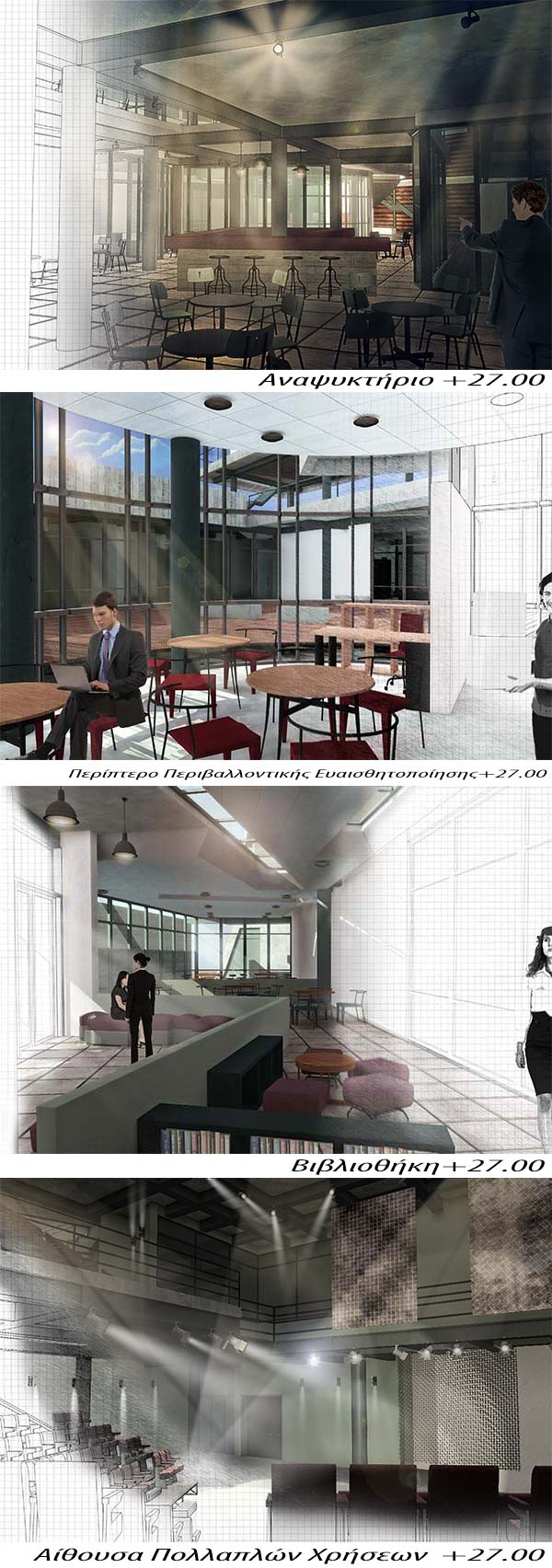STUDENTS PROJECTS
PROJECTS2013
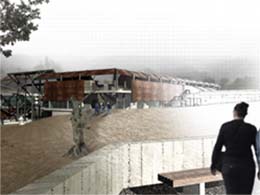
28 April, 2015
Interactive center
This thesis is about an "Interactive center of environmental awareness, cultural and rural orientation in Syggrou estate, in Athens".
Students : Benieris Εmmanouil, Βenizelos Αnthos, Gatou Aikaterini
Supervisors: G. Papagiannopoulos, G. Patrikios, D. Loukopoulos
Democritus University of Thrace
Presentation Date: 23/10/2014
This thesis is about an "Interactive center of environmental awareness, cultural and rural orientation in Syggrou estate, in Athens". The current situation in Greece and particularly the trend of our time, for education's return to the primary sector, initially made us search the suitable area for integration of our subject. Seeking the study area, on the outskirts or in the city, near major cities or in the countryside, we were briefed for the Syggrou estate. It is the headquarters of the Institute of Agricultural Sciences, that reviews constantly its educational programs, attracting more and more aspiring young farmers of different ages. The property has an area of 971 acres (700 forest, 271 non-forest). It borders south with the municipality of Maroussi, northeast with the municipality of Kifissia and east by the municipality of Melissia.
The Syggrou estate is considered one of the largest green lungs in Athens. It is delimited Southwest of Kifisia avenue and inside are identified buildings of historical importance. Considering the current state of the property, problems which were identified by visitors and organized groups, coupled with the fact that many Athenians don't know about it, formed the general axis of our design.
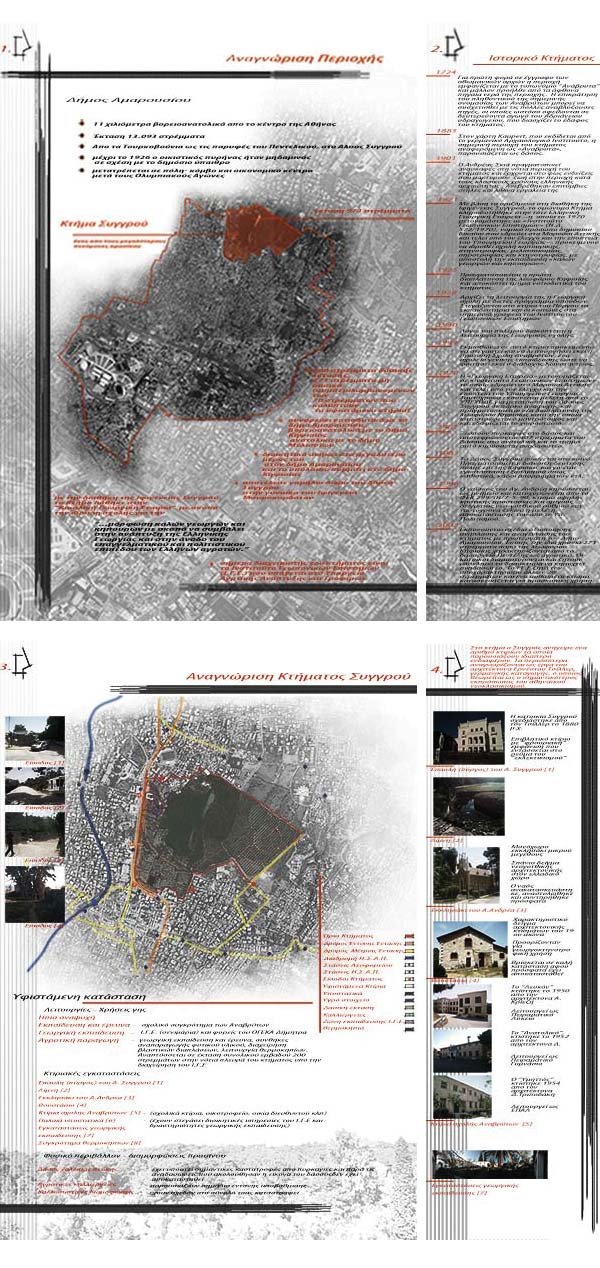
The aim of our proposal is the converting of Syggrou estate to a metropolitan attractive site of forest, rural and cultural character, to maintain and strengthen its ecological importance. Respecting on Iphigenia's Syggrou legacy, in the broader context of our design to the benefit of citizens and future young farmers, we formed the site through mild interventions. We redesigned traffic networks of vehicles and pedestrians, points of stop, activities or cultivations, with different qualities and intensities. We incorporated fire protection points and a new outdoor parking close to the current main entrance which was redesigned to attract more visitors.
The area is divided into zones maintaining the uses of existing buildings, except for those housing sections of the institute today. We propose the converting of the Syggrou tower into a museum, the placement of estate's management committee to the old cowshed and the configuration of the current institude in a market for selling products produced in education.
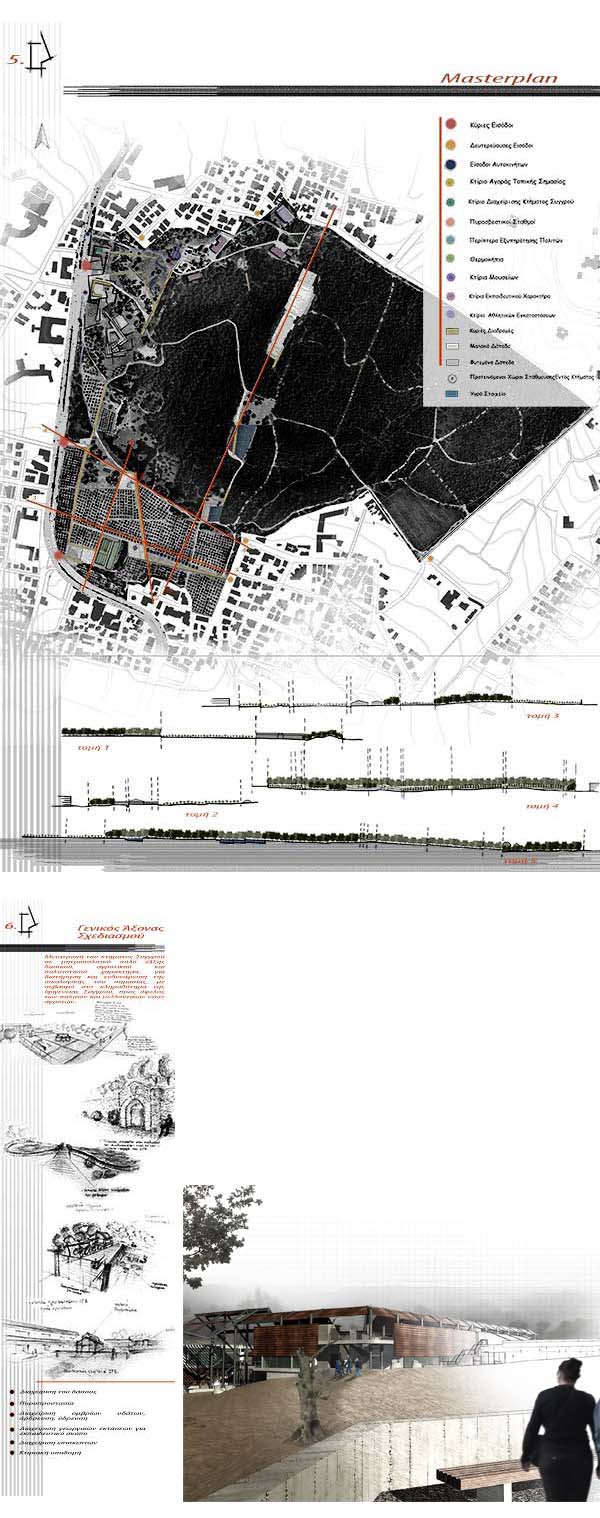
All the educational functions of the Institute have been redefined as a part of a new building unit. The building program was formed by a questionnaire and combined with cultural activities contributing to the spherical education of young farmers, at all levels. In the context of empowerment and better visitor's management in the estate, the proposed interactive center, as an open building, is aiming at developing collective environmental awareness through the fermentation of relations between visitors and students of different ages. The concept of interactivity in our design is located between the estate and the wider area, the new building's infrastructure and Syggrou estate and finally between educational functions and cultural activities.
The building's area was selected with the following criteria:
a) Densification point between historical, educational , forested and rural areas of the estate.
b) Intervention in non- forested zone.
c) Balanced relationship between urban fabric and woodlands.
d) Site which is connecting the two main entrances.
e) Networking with traffic axes and natural paths.
f) Dialogue with existing infrastructure.
Our design intentions were ranked with the following order:
a) Creating a center of collecting and channeling movements of estate through connections with routes, natural paths, existing facilities of institute and the proposed parking site.
b) Management of the volume of building by size, inclusion in ground of estate and the contact with natural environment.
c) Dipole's management of education and the public character - balance inside building's structure.
d) Configuration of center with introverted and extroverted nature.
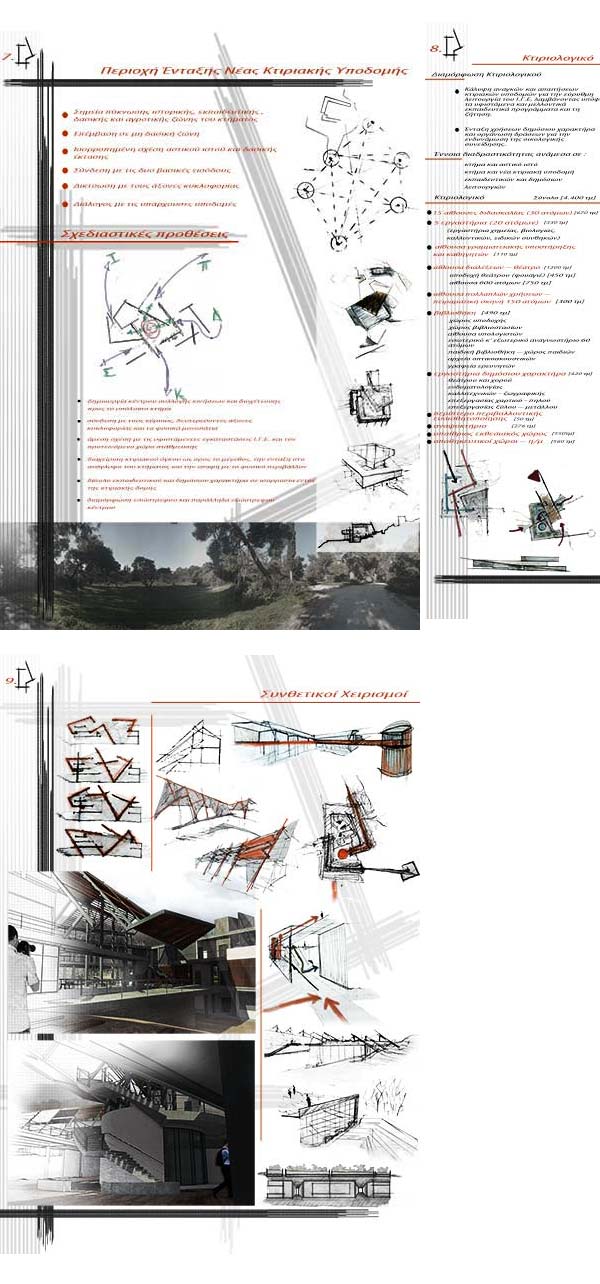
Designing through connection of nodes as way to manage the "vacuum", emerged a square. It is an enclosed structure which gradually opened in the forest. We sketched a "nerve" which is seeking to link the market with the southern crop areas of the estate. These two operations are separated respectively in educational and public zones. In the center of composition, public and private movements bridged in horizontal and vertical axes. The natural soil penetrates into the building's heart on the lower level, where public functions (café, library - reading room, institute's laboratories, environmental awareness point for organizing activities within and outside of Syggrou estate) have been eminently placed. In a mixed construction, closed and open spaces alternate at all levels for connection and contacting out. The terraces were formed with points of low planting, gravel and stop points. The movements received from the "nerve" converse with cultural workshops and their roofs, which were formed as small fairgrounds. The linear path of the exhibition to the upper level and the center, are housed by lightweight steel construction with alternations of coating. Fixed or changable surfaces and blinds, for the entire steel construction, offer protection to visitors. Sections like the lecture hall and multi room have a dual nature, educational and theatrical. The building façades are formed with plaster, exposed concrete, glazing, metal surfaces and blinds.
